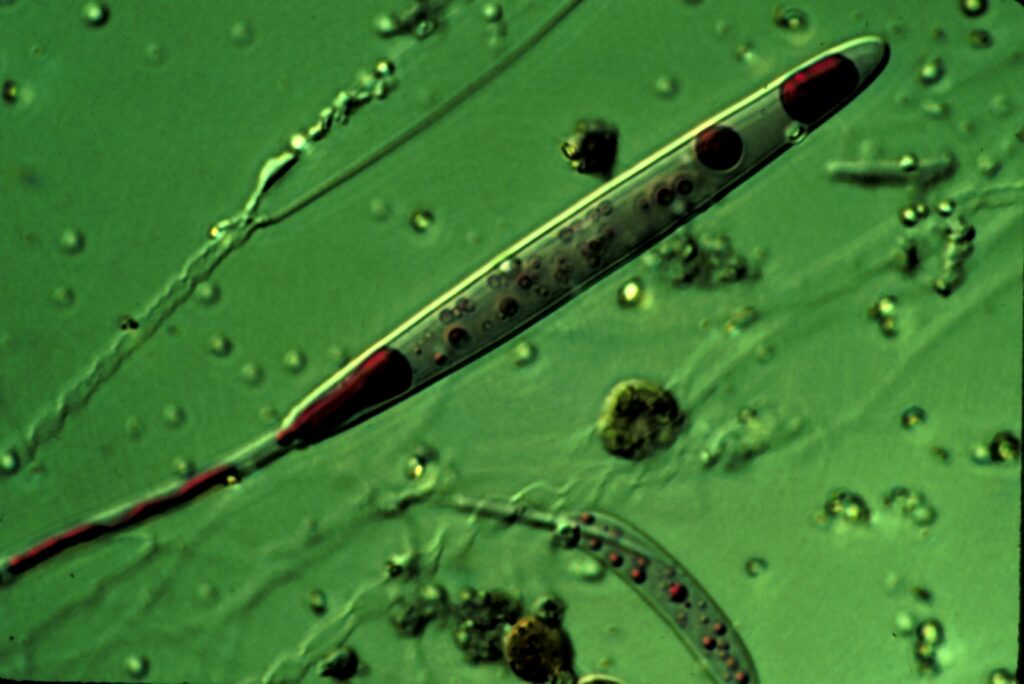He Lily S, Qi Yujia, Allard Corey AH, Valencia-Montoya Wendy A, Krueger Stephanie P, Weir Keiko, Seminara Agnese, Bellono Nicholas W (2023) Molecular tuning of sea anemone stinging eLife 12:RP88900
Cnidarians (corals, sea anemones, and jellyfish) are a group of predatory aquatic animals that use stinging cells to capture prey and defend from predators. These cells, called cnidocytes or nematocytes, contain tiny spring-laden harpoons tipped with powerful neurotoxins. Nearly all cnidarians have these stinging cells—but luckily only a few are dangerous to humans!
If you’ve got a weapon, you’d better know how to use it

In order to use their stinging cells, cnidarians need to sense their prey. One obvious way this could happen is through touch. If you touch a jellyfish, it stings you, right? However, from the jellyfish’s perspective, it doesn’t want to fire too easily. Let’s say it brushes up against a piece of seaweed and fires all of its cnidocytes… now the jellyfish has just wasted a lot of expensive venom. And cnidocytes are one-use only! Therefore, cnidarians need a mechanism to detect prey and predators while ignoring everything else.
Of course, different species may have different needs and requirements for their stinging. In a recent study, scientists looked at two species of anemones that differ in their lifestyle and stinging sensitivity, and figured out that these behavioral differences could be tracked back to a single gene.
One anemone, Nematostella vectensis, spends its life burrowed in the mud, and mainly uses its stinging cells to capture prey. The other anemone, Exaiptasia diaphana, does not burrow and is more exposed to predators. This species also has symbiotic algae that provide extra nutrition. Just like how corals have symbionts that perform photosynthesis, this anemone uses these algae to supplement its diet, and doesn’t need to worry so much about hunting prey. For these reasons, E. diaphana mainly uses its cnidocytes for defence.
Shoot first, ask questions later?
The different ecological needs of the two species are accompanied by differences in their stinging behavior. N. vectensis is much more choosy—touch alone is not enough to get it to sting. Instead, this species requires touch plus chemical signals (things that smell like prey)—allowing it to optimize its hunting strategy while conserving energy. E. diaphana stings in response to touch alone, without the chemical cue.

Amazingly, a single gene seems to be responsible for these different behaviors! N. vectensis uses a type of protein called an “ion channel” to control cnidocytes. When the animal touches something, it activates a mechanical sensor that causes changes in calcium concentration, which activates the ion channel and causes the cnidocyte to fire. In N. vectensis, the channel is inactive by default and only becomes active when the animal detects certain chemicals; therefore, it needs both chemical signals and touch in order to fire.
E. diapahana uses the same ion channel for its cnidocytes, but it’s much more sensitive. That’s why this species responds to touch even without a chemical stimulus. The scientists examined the genetic sequences of the ion channel in both species, and found that a specific part of the gene differs between the two species and is responsible for the increased sensitivity in E. diaphana.
From molecules to ecology
This study is a cool example of how small molecular differences can cause major differences in behavior and ecology. Sometimes even complex behaviors are regulated by relatively simple mechanisms. When you think about how organisms evolve, you can see how a single mutation could have a big impact!
Cover image: closeiup of Nematostella vectensis mouth and tentacles. Image source: Cory Berger

I am a PhD student at MIT and the Woods Hole Oceanographic Institution, where I study the evolution and physiology of marine invertebrates. I usually work with zooplankton and sea anemones, and I am especially interested in circadian rhythms of these animals. Outside work, I love to play trumpet, listen to music, and watch hockey.

